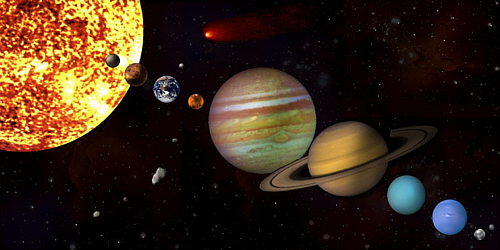
Our solar system’s central star, the Sun, has inspired mythological stories in cultures around the world, including those of the ancient Egyptians, the Aztecs of México, Native American tribes
of North America and Canada, the Chinese, and many others. A number of ancient cultures built stone structures or modified natural rock formations to mark the motions of the Sun and Moon — they charted the seasons, created calendars, and monitored solar and lunar eclipses. These architectural sites show
evidence of deliberate alignments to astronomical phenomena: sunrises, moonrises, moonsets, even stars or planets. Many cultures believed that the Earth was immovable and the Sun, other planets, and stars revolved about it. Ancient Greek astronomers and philosophers knew this “geocentric” concept from as early
as the 6th century B.C. The Sun is the closest star to Earth, at a mean distance from our planet of 149.60 million kilometers (92.96 million miles). This distance is known as an astronomical unit (abbreviated AU), and sets the scale for measuring distances all across the solar system. The Sun, a huge sphere of mostly ionized gas, supports life on Earth. The connection and interactions between the Sun and Earth drive the seasons, ocean currents, weather, and climate.
DOWNLOAD COURSE








0 comentarios:
Publicar un comentario